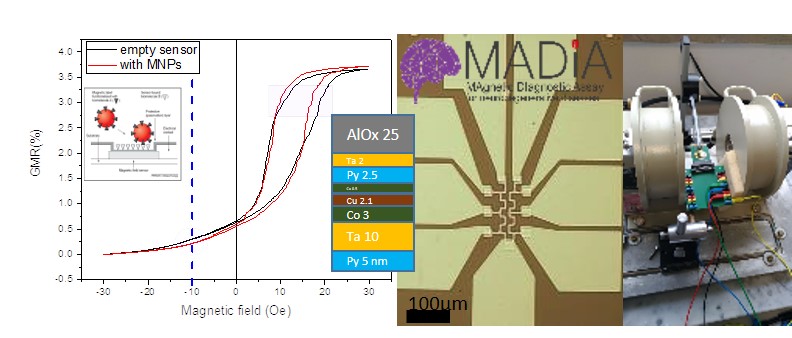Involved People: F. Sirsi, S. Rizzato, A.G. Monteduro, G.Maruccio
Collaborations: Prof. G. Reiss (Bielefeld), Dr. V.A.Dediu (Bologna)
General description: Multilayer structures including magnetic films are the basis for giant or tunneling magnetoresistance devices. Magnetic tunnel junctions, in their most simple form, are composed of two ferromagnetic layers separated by an thin insulating material and allow achiving a large magnetoresistance when the layer magnetization switches from parallel to antiparalles. More recently, research focused on the integration of further layers including nanoparticles, magnetic molecules, multiferroics or superconducting films.
Scientific Strategies/Facilities: Magnetic multilayers are fabricated by lithography and sputtering deposition. Within them, nanoparticles and molecular layers were also included, while the introduction of a superconducting layer allows to evaluate spin polarization. Charge and spin transport studies are carried out within electromagnets or superconducting magnets up to 10.5T and from room temperature to 10 mK. On the technological side, the target is to achieve a large magnetoresistance, which is useful for further applications such as in biosensors as targeted in the EU project MADIA.


